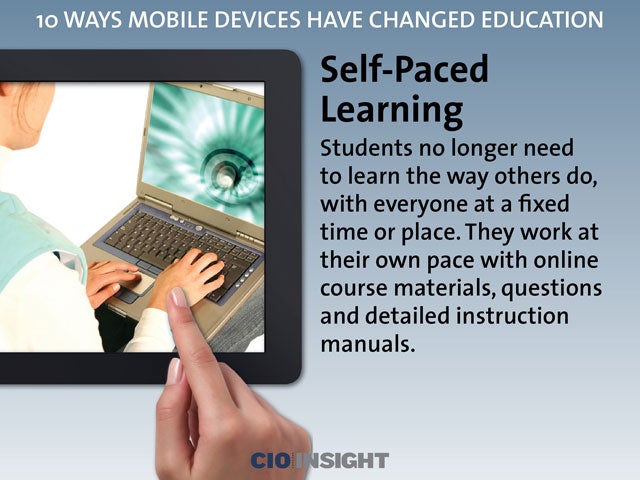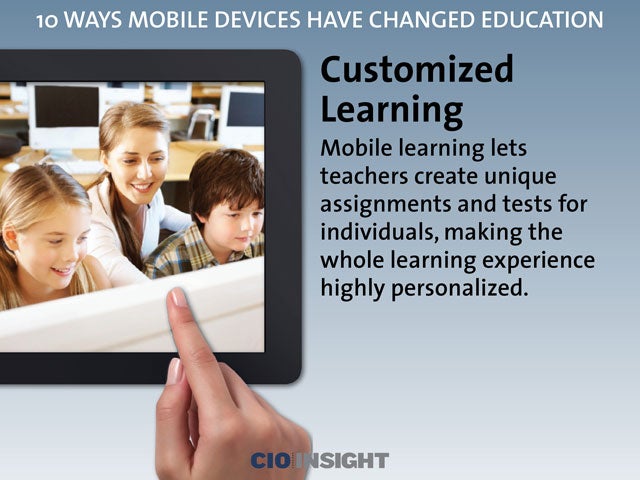
10 Ways Mobile Devices Have Changed Education
 10 Ways Mobile Devices Have Changed Education
10 Ways Mobile Devices Have Changed Education
Mobile learning is the new face of education, and by 2020 the mobile-learning market is expected to reach $32 billion.
 Carry Along Your School
Carry Along Your School
Because of mobile devices, students no longer need to be in school to learn and ask questions. They can work from anywhere at any time with their smartphone or tablet and connect with teachers and fellow students, check assignments and work on shared content.
 Virtual School Bag
Virtual School Bag
Mobile devices allow students access to textbooks, course material or content. Smart devices act as virtual school bags, eliminating the need to carry real bags stuffed with books.
 Self-Paced Learning
Self-Paced Learning
Students no longer need to learn the way others do, with everyone at a fixed time or place. They work at their own pace with online course materials, questions and detailed instruction manuals.
 Customized Learning
Customized Learning
Mobile learning lets teachers create unique assignments and tests for individuals, making the whole learning experience highly personalized.
 Multimedia Learning
Multimedia Learning
Students choose their own learning methods. Sole reliance on textbooks is a thing of the past because students learn with audio, video, slide shows and online presentations.
 Augmented Reality
Augmented Reality
With augmented reality, apps are the norm in education. Textbooks can now come alive. Instead of learning a lesson, mobile devices help students walk through geographical sites or re-create historic events, enabling an immersive and fun way to learn.
 Fun While Learning
Fun While Learning
Mobile games are often the first form of mobile interaction for kids. Mobile devices enable educators to create education apps like word puzzles, number riddles and math games, making learning engaging and fun.
 Future-Ready
Future-Ready
Digital education is increasingly adopting cloud technologies and students use document sharing to work on team assignments, discussion forums and video conferencing, which prepares them to work with technologies that will dominate the 21st century.
 Remote Learning
Remote Learning
Students in remote places can connect to quality learning and use digital education and learning management platforms in the cloud, eliminating the need for desktops and tablets.
 Novel Teaching Practices
Novel Teaching Practices
Mobile devices empower teachers to experiment with novel teaching methods. They can break rote learning practices and instead use interactive techniques like live chat, video conferencing and shared studies.